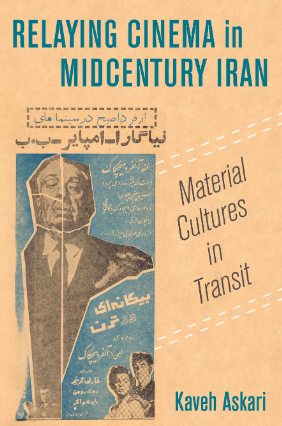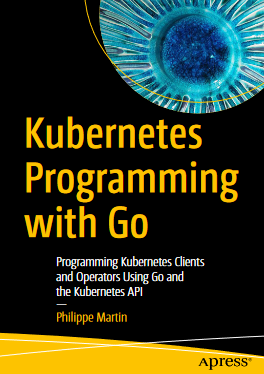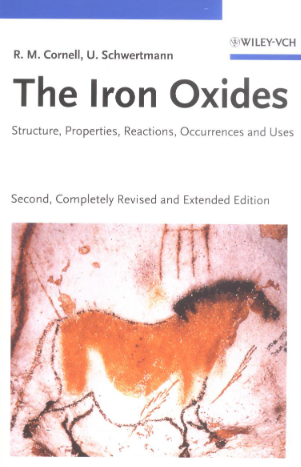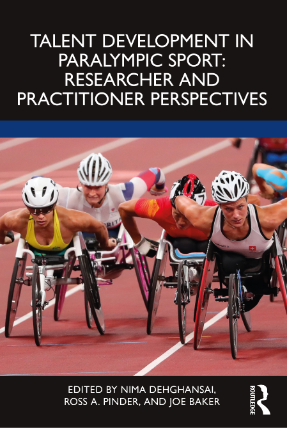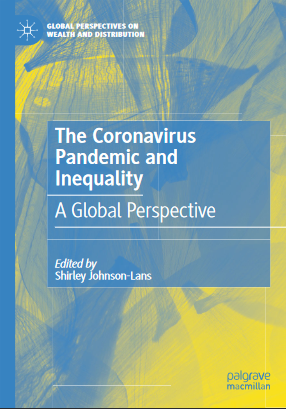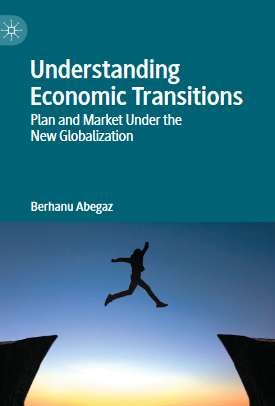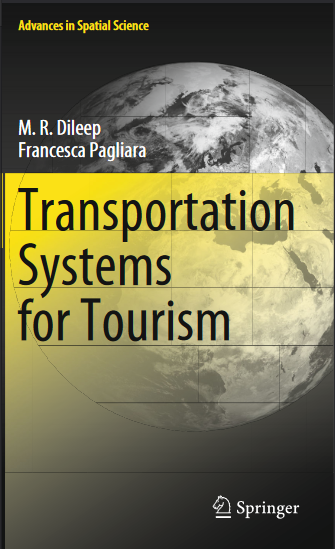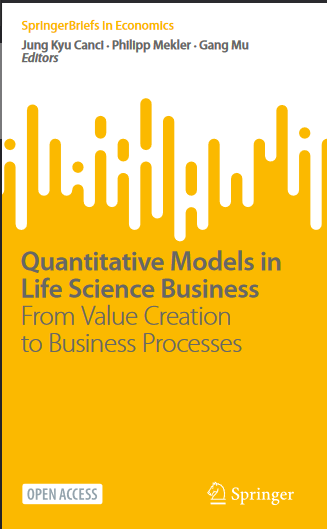موضوعات
آموزش و پرورش
ادبیات و زبان
پزشکی، دندانپزشکی و داروسازی
تاریخ و جغرافیا
داستان و رمان
دیگر
دین و فلسفه
روانشناسی
ریاضیات و آمار
سلامتی، تناسب اندام و رژیم غذایی
شیمی و پلیمر
علوم اجتماعی و حقوق
علوم زیستی و بیوتکنولوژی
فیزیک و نجوم
کامپیوتر و اینترنت
کتابهای کودکان و داستان
کسب و کار و اقتصاد
کشاورزی و دامپزشکی و غذا
معماری
مهندسی و فناوری
هنر و تئاتر
محصولات
Relaying Cinema in Midcentury Iran Material Cultures in Transit - Original PDF
نویسندگان: خلاصه: 1 Midcentury Film companies in Iran in the early 1960s did not always pay careful attention to their design elements, but Azhir Film had the ambition to bring its films, and especially its new release Zarbat (The Strike, Khachikian, 1964), into the world of midcentury cinema with a memorable design scheme. The film’s creators did not realistically expect it to produce revenues outside of Iran, although they teased this possibility in the press as the project moved through various stages of its production. 1 The primary aim, rather, was to create a certain kind of cinematic experience when the film was released. The release called upon modern design’s global ambitions at a time when packing movie houses in Tehran still typically meant securing a well-traveled film print. A stubborn disagreement between filmmakers had left a lot riding on this particular crime thriller. Film studios in Iran tried to avoid compet- ing releases, but this time, during a coveted release slot after the start of spring and the Iranian New Year, two producers refused to compro- mise. The Strike, produced by Josef Vaezian and directed by Samuel Khachikian, each of whom was coming off of a string of successful films, would be released the same week as the rival producer and for- mer Khachikian collaborator Mehdi Missaghieh’s Ensan- ha (Human Beings, Aghamaliyan). Industry professionals debated the ethics of this in the press, but neither producer would move aside. 2 The Strike’s disenth Anniversary The Art of Game Design A Book of Lenses 3rd Edition - Original PDF
نویسندگان: خلاصه: I was shorter then. since that picture was taken, I’ve done a lot of different things. I’ve worked in circuses as a professional juggler. I’ve been a writer, comedian, and magician’s apprentice. I’ve worked at IbM and bell Communications Research as a software engineer. I’ve designed and developed interactive theme park rides and massively multiplayer games for the Walt Disney Company. I’ve started my own game studio, and become a professor at Carnegie Mellon University. but when peo- ple ask me what I do, I tell them that I am a game designer. I mention all this only because at various times in this book, I will be drawing examples from these experiences, since every single one of them has taught me valuable lessons about the art of game design. that might sound surprising now, but hopefully, as you read this book, it will help you see the ways that game design meaningfully connects to the many experiences in your own lifeKubernetes Programming with Go Programming Kubernetes Clients and Operators Using Go and the Kubernetes API - Original PDF
نویسندگان: خلاصه: Back in 2017, I was working for a company building video streaming software. At the end of that year, a small team, including me, got assigned a new job to work on deploying the Video CDN developed by the company on Kubernetes. We decided to explore the concept of Custom Resources and Operators to deploy this CDN. The current Kubernetes release was 1.9, the concept of Custom Resource Definition had just been released in 1.7, and the sample-controller repository was the only documentation we knew of to help build an Operator. The Kubernetes ecosystem, being especially lively, had tools appearing in the following months, specifically the Kubebuilder SDK. Thus, our project was launched. From that moment on, I spent numerous days exploring how to build Operators and other programs interacting with the Kubernetes API. But the damage was done: I had started to learn Kubernetes programming from specific to general, and it took me a long time to fully understand the innards of the Kubernetes API. I have written this book in the hope that it can teach new Kubernetes developers how to program, from general to specific, with the Kubernetes API in GoThe Iron Oxides Structure, Properties, Reactions, Occurences and Uses - Original PDF
نویسندگان: خلاصه: Preface to the Second Edition Since this book first appeared, there have been hundreds of new publications on the subject of iron oxides. These have covered a wide range of disciplines including sur- face chemistry, the geosciences, mineralogy, environmental science and various branches of technology. In view of the amount of new material that is available, we decided, that once the copies of the first edition were exhausted, we would prepare a second edition that would incorporate the new developments. As before, our aim has been to bring all aspects of the information concerning iron oxides into a single, compact volume. All the chapters have been revised and up- dated and new figures and tables added. The book is structured according to topic with the same arrangement as in the first edition being followed. In view of the re- cent recognition of the impact iron oxides have on environmental processes, a chap- ter dealing with the environmental aspects of these compounds has been added. The book concludes with a considerably expanded bibliography. We hope that this new edition will continue to be of interest to all those research- ers who, in one way or another, are involved with iron oxides. Numerous persons and institutions from around the world again supplied data, figures, colour pictures and electron micrographs and technical help. These include Dr. H. Chr. Bartscherer (Mçnchen), Mr M. Burlot (Apt), Dr. R. Båumler and Dr. Be- cher (Freising), Mr H. Breuning (Stuttgart), Dr. J. M. Bigham (Columbus, USA), Dr. G. Buxbaum (Bayer), Dr. L. Carlson (Helsinki), Dr. R. A. Eggleton (Canberra), Dr. F. G. Ferris (Toronto), Dr. R. W. Fitzpatrick (Adelaide), Dr. D. Fortin (Ottawa), Dr. M. R. Fontes (Guatemala), Professor R. Giovanoli (Bern), Dr. G. Glasauer (Guelph), Dr. M. Hanslick (Mçnchen), Dr. P. Jaesche (Freising), Dr. A. A. Jones (Reading), Dr. R. C. Jones (Honolulu), Dr. D. E. Janney (Tempe), Dr. R. Loeppert (College Station), Professor S. Mann (Bristol), Dr. E. Murad (Marktredwitz), Dr. H. Maeda (Tsukuba), Professor A. Manceau (Grenoble), Professor E. Matijevic (Potsdam, USA), Mrs U. Maul (Freising), Dr. J. P. Muller (Paris), Muse National de Prhistoire (Les Eyzies, France), Mr R. Miehler (Mçnchen), Dr. T. Nagano (Naka), Dr. H. Naono (Uegahara), NASA (Houston), Professor A. Posner { (Perth), Mrs M. Sauvet (Apt), Dr. N. Sabil (Mçnchen), Dr. P. Schad (Freising), Dr. A. Schei- degger (Zçrich), Dr. T. Schwarz (Berlin), Dr. A. Scheinost (Zçrich), Dr. D. Schçler (Bremen), D. Schwertmann (Freising), Professor H. Stanjek (Aachen), Dr. P. Self (Adelaide), Professor T. Sugimoto (Sendai), Dr. K. Tazaki (Ishikawa), Dr. T. TessieTALENT DEVELOPMENT IN PARALYMPIC SPORT: RESEARCHER AND PRACTITIONER PERSPECTIVES - Original PDF
نویسندگان: خلاصه: dentifying and developing talented athletes to their fullest potential is a central concern of coaches, sports scientists, and sports policymakers. However, there is currently limited practical and theoretical knowledge for those working in Paralympic sport. A systematic review by our research team (Dehghansai et al., 2017a), for example, highlighted the clear lack of literature examining athlete development. Subsequent studies (Dehghansai et al., 2017b; Dehghansai & Baker, 2020; Dehghansai et al., 2020, 2022, 2021, Houlihan & Chapman, 2017; Patatas et al., 2020, 2022) from research groups around the world have expanded our understanding, and provided the impetus for this book, which aims to synthesize the most up-to-date research with practice across international Paralympic sport systems (e.g., from those in Australia, Belgium, Brazil, Canada, Czech Republic, United Kingdom, United States, Netherlands, and New Zealand). As part of Australia’s preparation for the Tokyo 2020 Paralympic Games, two of the authors/editors have experienced first-hand the potential opportunities for supporting athlete development. We have witnessed rapid performance trajectories, the quality and passion of coaches and other practitioners working in this field, and the creativity required to solve problems. We also observed (and experienced) many of the challenges that are highlighted and discussed at length throughout this book. We worked closely with sports which, during this period (i.e., 2016–2021), resulted in athletes winning medals at the 2020 Paralympic Games who were not even participating in that sport during the time of the previous Paralympic Games (i.e., Rio 2016 Paralympic GamesTaxing Choices for Managing Natural Resources, the Environment, and Global Climate Change - Original PDF
نویسندگان: خلاصه: This book presents fiscal system reform perspectives to protect the local and global environment and preserve and sustain natural resources. Strategies and practices to manage and sharing of revenues from natural resources are highlighted. Alternative economic instruments such as carbon taxes, elimination of energy subsidies, and tradable permits to combat global climate change are examined. In addition, the roles of various orders of government in managing, taxing, and sharing natural resources in selected federal countries are documented to highlight the impact of such division of responsibilities in preserving natural resources and the environment. Finally, reform options to achieve integrity in oil and gas operations are highlightedUnderstanding Economic Transitions - Original PDF
نویسندگان: خلاصه: Around 1990, about a quarter of the world’s population lived in middle-income socialist economies and another quarter in high-income and middle-income cap- italist economies. The remainder lived in low-income economies with varying admixtures of planning, markets, and informal exchange institutions. Forty years later, the remaining outposts of socialism are Cuba and North Korea, while a few others (mainly in the former states of the Soviet Union) wallow in the no man’s land of neither functional capitalism nor socialism. The USSR sustained seven decades of statist socialism between 1922 and 1992, Central Eastern Europe (CE) and Southeastern Europe (SEE) for nearly five decades, and China for a little over three decades. By 2000, nearly all have systemically “transitioned” from a centrally-planned economy to some form of a decentrally organized market economy. How and why large parts of Europe, Eurasia, and East Asia transitioned out of the capitalist system in 1917–1952, how they managed to industrialize in non-market settings, and how and why they came back to the capitalist fold are questions comparative economic systems seek to address. Furthermore, this wrenching structural change entailed a concomitant political transition from a monoparty system to an illiberal multiparty system in formerly socialist Europe and the former Soviet Union (FSU). Comparative Economic Systems (CES) focuses on the workings of institu- tional economic mechanisms across economic systems and income levels. CES, at the macro-, meso-, and micro-levels, dwells on the two foundations of an economic system: ownership types for productive assets (state vs. private) and the degree of centralization of decision-making over resource allocation and income distribu- tion (plan vs. market). The conceptual entry points are incentives (known rewards or residual legatee rights) and the sources of discipline (bureaucratic-based or market-based competition). More broadly, Comparative Economics (CE), which is broader than CES, melds the study of economic systems with historical insti- tutionalism and development economics to explore the determinants of prosperity and inequality properties over time and across economic space within a given economic systemThe Pearl of the East The Economic Impact of the Colonial Railways in the Age of High Imperialism in Southeast Asia - Original PDF
نویسندگان: خلاصه: During the last decades of the nineteenth century until the 1930s, economic growth in Southeast Asia (we understand Southeast Asia at the end of the nineteenth century: Burma, British colony, Thailand or inde- pendent Siam, Malaysia British colony, Indonesia or Dutch East Indies, Dutch colonies, Indochina, French colonies and the Philippines, Spanish colonies until the end of the century, and from 1898 onwards, American colonies until independence) was a common fact among the economies of the region, despite finding differences in the growth patterns of different countries. Particularly relevant are the studies of Maddison, who analyze Indochina and the Dutch East Indies (Maddison 1990, p. 364). In the case of the Philippines, the most relevant growth model studies are provided by Hooley, with an attempt to explain the growth of the Philip- pines (Hooley 2005, pp. 464–488) and Booth, who emphasizes the analysis of the impact of the provision of new land for the plantation economy in the Philippine archipelago (Booth 2007, pp. 241–266). It should also be noted that these models often work with partially estimated data for dates for which there are no historical references, particularly when data from more remote areas must be covered. In the case of the Philippines, we have worked with data from engineering and execution projects for the Spanish period, and census data for the North American periodTransportation Systems for Tourism - Original PDF
نویسندگان: خلاصه: The term “transportation system” is usually referred to the equipment and logistics of transporting passengers and goods. It covers the trips by all means of transport, from cars and buses to boats, aircraft, and even space travel. The objective of a transportation system is to coordinate the movement of people, goods, and vehicles in order to use routes most efficiently. When implemented, transportation systems seek to reduce transport costs and improve delivery times through effective timetabling and route management. Periodic re-evaluations and the development of alternative routes allow for timely changes to the transportation system to for increasing the efficiency. A standard transportation system will usually feature multiple timetables designed to inform the user of where each vehicle in the fleet is expected to be at any given point in time. These timetables are developed alongside an array of route plans designed to coordinate vehicle movements in a way that prevents bottlenecks in any one location. The main benefit of implementing a transportation system is delivery of goods and users to their destinations in a timely manner. This, in turn, increases the effi- ciency of vehicle use, as the same vehicle can be used for “multi-drop” jobs, such as bus services or home delivery networks, far more effectively when their routes are planned in advance rather than being generated “on the fly”. Transportation systems are developed in a wide variety of sizes. Local transport networks spanning the bus network for a city and its suburbs are common, as are country-wide delivery networks for haulage firms. Airlines use international transportation systems to coordinate their flights. The larger the distance being covered, the more effective the use of vehicles when a transportation system is used.Quantitative Models in Life Science Business - Original PDF
نویسندگان: خلاصه: The pharmaceutical industry is a key, yet complex sector within the global econ- omy. Organizationally, its complexity is outlined by an involved business model, an intricate organizational structure, and a challenging environment. Economically, the pharmaceutical industry has been characterized by high profit margins; this mainly as a result of substantial research and development (R&D) investment and its legal protection by patents. Over time the original situation has evolved further, gener- ating two major types of pharmaceutical firms: originators and generic producers. High R&D investment is a characteristic of the originator pharmaceutical companies which produce patent-protected drugs, as well as biotech specialists which produce biologics. The generic producers, on the other hand, do not incur the initial R&D expenses (or less so) and in general produce drugs lacking patent protection. On top of this now traditional set, new segments have arisen in the pharmaceutical indus- try, comprising services in or around the traditional drug industry, e.g. diagnostic or data-oriented endeavours.آیا کتاب مورد نظر هنوز بر روی سایت قرار نگرفته است؟ جای نگرانی نیست! کافی است بر روی گزینه سفارش کتاب کلیک کرده و درخواست خود را ثبت کنید. در کمتر از چند ساعت کتاب شما را آماده خواهیم کرد.
